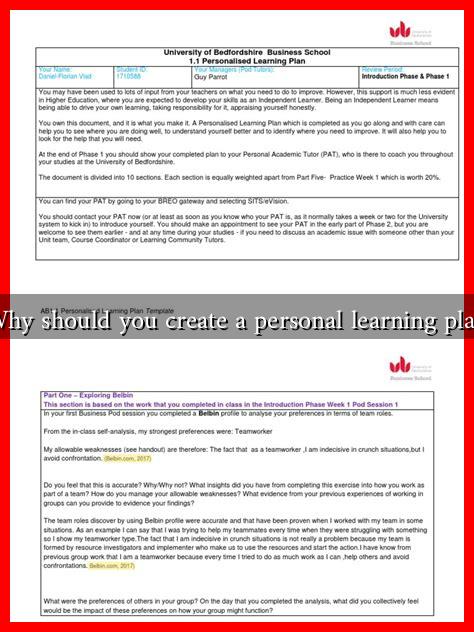-
Table of Contents
Why Should You Create a Personal Learning Plan?
In an ever-evolving world, the importance of continuous learning cannot be overstated. Whether you are a student, a professional, or someone looking to enhance personal skills, a Personal Learning Plan (PLP) can be a game-changer. This article explores the significance of creating a PLP, its benefits, and how to effectively implement one.
Understanding Personal Learning Plans
A Personal Learning Plan is a structured approach to identifying your learning goals, the resources you need, and the strategies you will employ to achieve those goals. It serves as a roadmap for your educational journey, helping you stay focused and organized.
Benefits of Creating a Personal Learning Plan
Creating a PLP offers numerous advantages that can significantly enhance your learning experience. Here are some key benefits:
- Clarity of Goals: A PLP helps you define clear, achievable learning objectives. This clarity allows you to focus your efforts on what truly matters.
- Personalized Learning: Everyone learns differently. A PLP enables you to tailor your learning strategies to suit your unique style, making the process more effective.
- Accountability: By documenting your goals and progress, you create a sense of accountability. This can motivate you to stay on track and achieve your objectives.
- Resource Management: A PLP helps you identify the resources you need—be it books, online courses, or mentorship—ensuring you have the right tools at your disposal.
- Time Management: With a clear plan in place, you can allocate your time more effectively, balancing learning with other responsibilities.
Real-World Examples and Case Studies
Many successful individuals attribute their achievements to well-structured learning plans. For instance, Bill Gates, co-founder of Microsoft, is known for his commitment to lifelong learning. He famously reads about 50 books a year, often creating a reading list that aligns with his personal and professional goals. Gates emphasizes the importance of self-directed learning, stating, “I believe that if you show people the problems and you show them the solutions, they will be moved to act.”
Another example is the case of a mid-career professional who wanted to transition into data science. By creating a PLP, they identified key skills to learn, such as programming languages and statistical analysis. They set a timeline for completing online courses and sought mentorship from industry professionals. Within a year, they successfully transitioned into a new role, demonstrating the effectiveness of a well-structured learning plan.
How to Create Your Personal Learning Plan
Creating a PLP may seem daunting, but it can be broken down into manageable steps:
- Identify Your Goals: Start by determining what you want to achieve. Are you looking to advance in your career, learn a new skill, or pursue a hobby?
- Assess Your Current Skills: Evaluate your existing knowledge and skills related to your goals. This will help you identify gaps that need to be filled.
- Research Resources: Look for books, online courses, workshops, and other resources that can help you achieve your goals. Websites like Coursera and edX offer a plethora of options.
- Create a Timeline: Set realistic deadlines for each goal. This will help you stay organized and motivated.
- Review and Adjust: Regularly review your progress and adjust your plan as needed. Learning is a dynamic process, and flexibility is key.
Conclusion
In conclusion, creating a Personal Learning Plan is an invaluable tool for anyone looking to enhance their skills and knowledge. By providing clarity, personalization, accountability, and effective resource management, a PLP can significantly improve your learning experience. As the world continues to change rapidly, investing in your personal development through a structured learning plan is not just beneficial; it is essential. Start today, and take control of your learning journey!
For more insights on personal development and learning strategies, consider visiting Edutopia.

